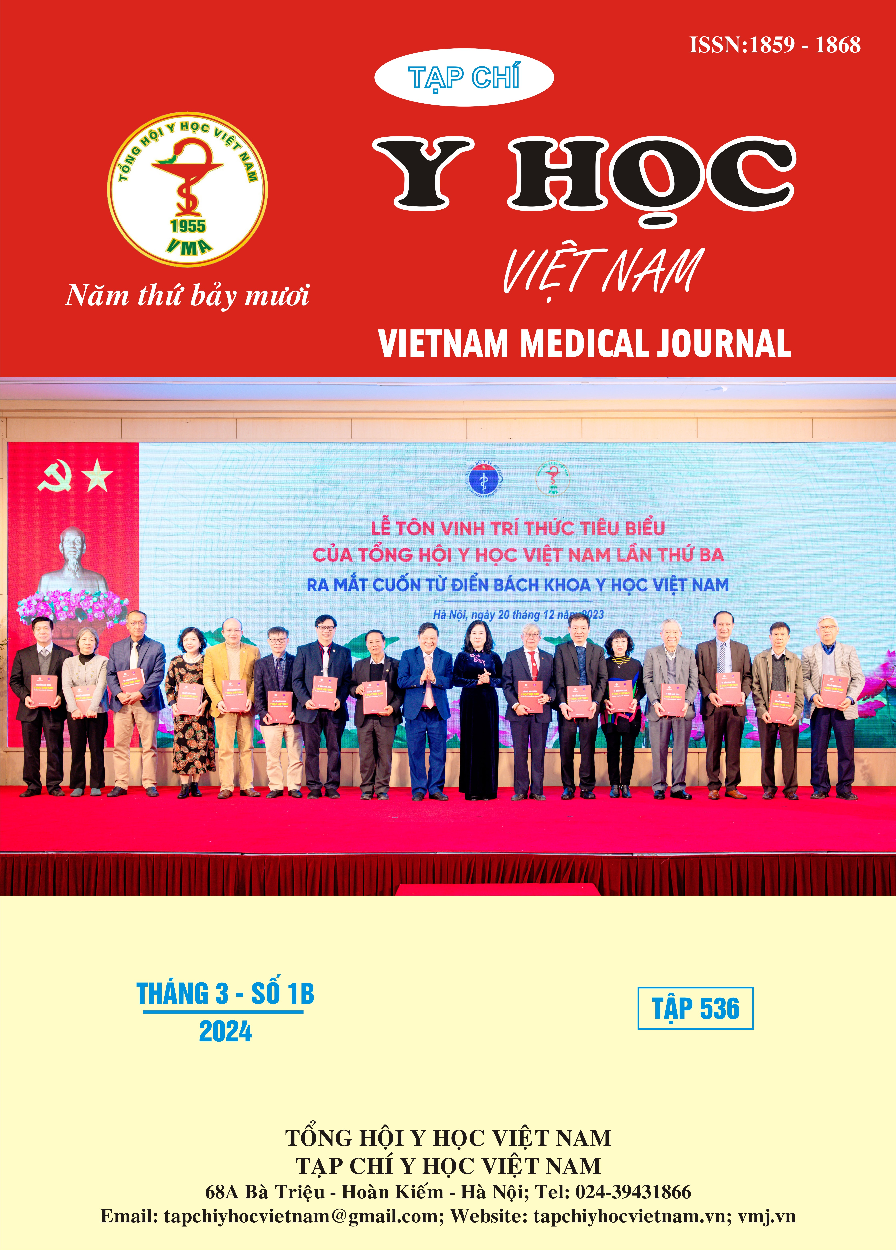MICROBIOLOGICAL TESTS IN THERAPEUTIC PENETRATING KERATOPLASTY USING GAMMA IRRADIATED CORNEAL TISSUES
Main Article Content
Abstract
Purpose: To evaluate microbiological tests in therapeutic penetrating keratoplasty using gamma irradiated corneal tissues. Methods: Cross-sectional, observational study, performed on 33 penetrating keratoplasty patients using gamma irradiated corneal graft from 11/2018 to 08/2023 at Ho Chi Minh City Eye Hospital. Microbiological tests included smear, culture, multiplex polymerase chain reaction (PCR), and pathology. Results: There were 3 groups of pathogens including fungi (22 eyes), bacteria (6 eyes), and herpes simplex virus type 1 (HSV-1, 5 eyes) causing keratitis. Among them, one eye was infected by microsporidia, which was grouped with fungi. Smear had results after 30 minutes; culture result on average after 3.0 ± 1.0 days (ranging from 2 to 7 days); PCR results after 1.6 ± 0.6 days (ranging from 1 to 3 days); and pathology after 8.5 ± 3.3 days (ranging from 5 to 15 days). The difference in results time was statistically significant (p < 0.0001). Fungi were diagnosed mainly based on smear and pathology, with rates of 76.2% and 66.7%, respectively. In particular, microsporidia were diagnosed based on PCR. Bacteria were diagnosed mainly based on clinical characteristics with a rate of 100.0%. HSV-1 were diagnosed by clinical obsertvation with a rate of 60.0%; and 40.0% by PCR. Conclusion: Microbiological tests were effective methods to diagnose and identify pathogens, optimizing the effectiveness of therapeutic penetrating keratoplasty in the treatment of infectious keratitis.
Article Details
References
2. Trần Ngọc Huy. Khảo sát tác nhân viêm loét giác mạc nhiễm trùng tại bệnh viện Mắt Thành phố Hồ Chí Minh. Luận văn tốt nghiệp Bác sĩ nội trú chuyên ngành Nhãn khoa. Trường Đại học Y Dược Tp. Hồ Chí Minh. 2020
3. Lin L, Lan W, Lou B, et al. Genus Distribution of Bacteria and Fungi Associated with Keratitis in a Large Eye Center Located in Southern China. Ophthalmic Epidemiol. 2017;24(2):90-96.
4. Nguyễn Thị Quỳnh Như. Khảo sát đặc điểm lâm sàng và cận lâm sàng bệnh viêm loét giác mạc do nấm và vi khuẩn". Luận văn thạc sĩ Y học chuyên ngành Nhãn khoa. Trường Đại học Y Dược Tp. Hồ Chí Minh. 2014
5. Kim E, Chidambaram J D, Srinivasan M, Lalitha P, et al. Prospective comparison of microbial culture and polymerase chain reaction in the diagnosis of corneal ulcer. Am J Ophthalmol. 2008;146(5): 714-723.
6. Eleinen K G, Mohalhal A A, Elmekawy H E, Abdulbaki A M, et al. Polymerase chain reaction-guided diagnosis of infective keratitis - a hospital-based study. Curr Eye Res. 2012;37(11): 1005-1011.
7. Younger JR, Johnson RD, Holland GN, et al. Microbiologic and histopathologic assessment of corneal biopsies in the evaluation of microbial keratitis. Am J Ophthalmol. 2012;154(3):512-519.e2.
8. Hudson J, Al-Khersan H, Carletti P, Miller D, Dubovy SR, Amescua G. Role of corneal biopsy in the management of infectious keratitis. Curr Opin Ophthalmol. 2022;33(4):290-295.
9. Phạm Hùng Vân. PCR và realtime-PCR Các vấn đề cơ bản và các áp dụng thường gặp. Nhà xuất bản Y học chi nhánh thành phố Hồ Chí Minh; 2009.
10. Pramod NP, Thyagarajan SP, Mohan KV, Anandakannan K. Polymerase chain reaction in the diagnosis of herpetic keratitis: experience in a developing country. Can J Ophthalmol. 2000; 35(3):134-140.


